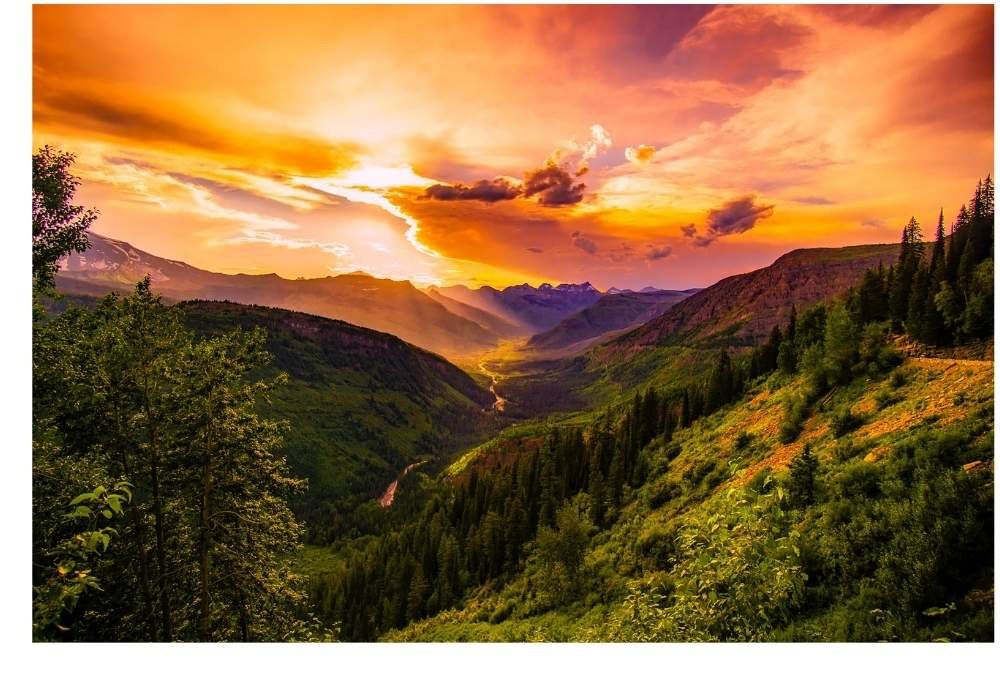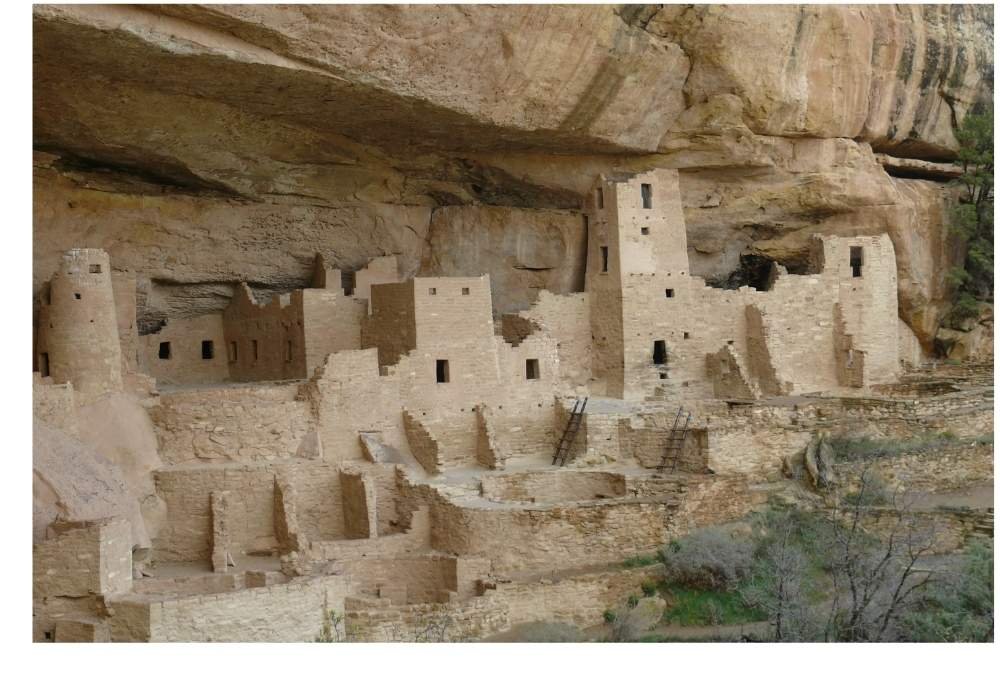
Wind whispers through empty streets, carrying the scent of dust and time forgotten.
Beneath the endless sky, remnants of once-thriving towns stand frozen, their stories etched into weathered walls and abandoned buildings. These forgotten corners of America offer more than just a glimpse into history—they invite us to wander through lost worlds, where adventure and mystery linger in every crack and crevice.
As we step into these eerie landscapes, we uncover the soul of a forgotten era, revealing timeless secrets and unforgettable moments that promise to leave us changed.
Let the journey into the past begin.
1. Bodie, California

Bodie is the quintessential Wild West ghost town—a snapshot of the past, preserved in time as a State Historic Park. It’s a place where the echoes of a once-thriving mining town still hang in the air. Established during the California Gold Rush, Bodie flourished in the late 1800s with its notorious saloons, brothels, and bustling mining operations. However, after the mines ran dry and economic hardships hit, the town was abandoned. What makes Bodie so captivating is its eerie stillness and the haunting sense that time has simply stopped. The dusty streets, vacant homes, and old storefronts look as though the residents just stepped out for a moment, leaving behind their daily lives frozen in place.
Walking through Bodie feels like a cinematic journey into history. The sight of rusted tools, cracked windows, and peeling paint tells the stories of the people who once called this place home. You can almost hear the sounds of horse-drawn carts and miners discussing gold prices. The contrast of Bodie’s barren landscape against the remnants of this thriving town serves as a poignant reminder of the harsh realities of frontier life. During my visit, I took a moment to stand in the middle of the old Main Street, letting the silence envelop me. It felt like standing in the midst of a ghostly memory, one that refuses to be forgotten.
Key Practical Information:
- Peak Season: Summer (June to September), offering pleasant temperatures between 70°F to 90°F. Off-peak Season: Winter (November to March), often cold and snowy, with temperatures dipping below freezing.
- Best Ways to Reach: Bodie is located 75 miles north of Bishop, California. The most accessible route is via Highway 395, followed by a 13-mile unpaved road—ensure your vehicle is suitable for rough terrain.
- Ideal Duration: 3 to 4 hours, which gives enough time to explore the town, visit the museum, and enjoy some of the walking tours.
- Must-Try Local Experiences: Don’t miss the Bodie State Historic Park’s museum and a visit to the old church. The town’s eerie abandoned buildings make for excellent photo opportunities.
- Budget Considerations: Entrance fees are minimal ($10 per vehicle). If visiting during winter, prepare for possible closures due to weather conditions. Budget for a rugged, remote experience.
- Cultural Etiquette: Be respectful of the preserved nature of the site—don’t disturb artifacts or enter buildings without permission.
- Photography Opportunities: Capture the rustic details of the old buildings, wide-angle shots of the town against the rugged Sierra landscape, and eerie close-ups of decaying interiors.
2. Centralia, Pennsylvania

Centralia is a modern-day ghost town with a dark and fiery tale. The town, once home to over 1,000 residents, has been virtually abandoned due to an underground coal fire that’s been burning since 1962. The fire, which started in an old mine, quickly spread to the veins of coal beneath the town, making the ground unstable and hazardous. Today, Centralia stands as an eerie, almost apocalyptic landscape. The few remaining structures are dwarfed by the persistent smoke and the smell of sulfur that rises from cracks in the earth. Walking through the abandoned streets feels like stepping into an alternate reality where the forces of nature have reclaimed civilization.
The visual drama of Centralia is surreal. Parts of the town are covered in a blanket of fog, the earth itself seemingly alive as it shifts and crackles beneath your feet. A walk along the old Route 61, which was once the main thoroughfare, now leads through a landscape where the road’s surface is cracked and marked with danger signs. A quiet moment on what remains of the road reveals just how much of Centralia’s spirit is tied to the fire that still burns underneath. I remember the feeling of standing at the edge of a forgotten world, where the atmosphere is thick with the weight of the town’s history.
Key Practical Information:
- Peak Season: Spring and Fall, with mild temperatures around 50°F to 70°F. Off-peak Season: Winter can be extremely cold with occasional snow.
- Best Ways to Reach: Centralia is located about 10 miles from Ashland, PA. The best access is via Route 61. Be aware that the area is highly restricted, and parts of the town are inaccessible due to the danger of sudden ground subsidence.
- Ideal Duration: 2 to 3 hours, just enough to explore the remnants of the town and walk along the abandoned Route 61.
- Must-Try Local Experiences: The graffiti highway (a stretch of road covered in colorful murals and tags) is a must-see, as it captures both the urban decay and the bizarre rebirth of the town’s ruins.
- Budget Considerations: Free to visit, but parking is limited, and some areas may be inaccessible due to safety concerns.
- Cultural Etiquette: Exercise extreme caution, as the area can be dangerous. Do not trespass on private property or enter restricted areas.
- Photography Opportunities: The smoke rising from the ground, the cracked and crumbling highway, and the eerie remnants of buildings make for dramatic shots. The contrast of life against decay is a compelling subject.
3. Rhyolite, Nevada

Rhyolite, a once-thriving mining town on the edge of Death Valley, now stands as a stunning tribute to the American frontier. Founded in 1904 during a gold rush, the town quickly grew to nearly 2,000 people. However, the gold boom was short-lived, and by 1916, Rhyolite was abandoned. Today, the town’s skeletal remains are a photographer’s dream. The remnants of its grand bank, train depot, and houses are scattered across the desert, their rusty skeletons casting long shadows under the scorching Nevada sun. The sense of emptiness is palpable, and the desert wind carries the whisper of the past.
What struck me about Rhyolite was the surprising beauty of its isolation. The backdrop of towering mountains and the endless expanse of desert creates a hauntingly beautiful contrast with the town’s ruins. The fact that many of the town’s structures are still standing, albeit in a dilapidated state, allows visitors to step back in time and imagine what life was like in this once-bustling community. I had a profound moment standing next to the ruins of the Bottle House, built entirely of glass bottles. It’s hard not to marvel at how resourceful and creative these miners were.
Key Practical Information:
- Peak Season: Spring and Fall are the best times to visit, with temperatures ranging from 60°F to 80°F. Off-peak Season: Summer is incredibly hot, often reaching over 100°F.
- Best Ways to Reach: Rhyolite is located about 5 miles from Beatty, Nevada, and can be accessed via a paved road. A high-clearance vehicle is not necessary.
- Ideal Duration: 1 to 2 hours, which is ample time to explore the ruins, including the Bottle House and the train depot.
- Must-Try Local Experiences: Visit the Goldwell Open Air Museum nearby, which features modern sculptures juxtaposed against the ruins of Rhyolite.
- Budget Considerations: Free entry. Nearby Beatty offers affordable accommodations and dining options.
- Cultural Etiquette: Respect the ruins—do not disturb or remove artifacts. Wear appropriate clothing for the hot, arid climate.
- Photography Opportunities: The town’s abandoned buildings, especially the train depot and Bottle House, provide stunning backdrops. The wide-open desert landscapes offer breathtaking panoramic shots.
4. Calico, California

Calico is a restored mining ghost town that transports visitors back to the late 1800s, offering a blend of history, preservation, and fun. The town was founded in 1881, during the height of California’s silver rush, and it boasted a population of 1,200 by the mid-1880s. After the silver veins were exhausted, Calico was abandoned in the early 1900s. Today, it remains one of the most visited ghost towns in the U.S., thanks to its meticulous restoration. Visitors can stroll down the original main street, lined with saloons, shops, and historical structures.
For me, the appeal of Calico lies in the immersive experience. I remember walking down the main street, surrounded by buildings that were once bustling with miners and merchants. The Calico Mining Company offers fascinating tours that allow you to step inside the mines and see firsthand the dangers and rewards of mining. It’s not just a history lesson; it’s a glimpse into the heart of California’s mining culture, complete with demonstrations of old-time tools and techniques. While some buildings are more touristy, the setting and the surrounding desert landscape keep the spirit of the past alive.
Key Practical Information:
- Peak Season: Spring and Fall, with moderate temperatures ranging from 70°F to 90°F. Off-peak Season: Summer can be very hot, often exceeding 100°F.
- Best Ways to Reach: Calico is easily accessible via Interstate 15 near Barstow, California. The drive from Los Angeles takes about 2 hours.
- Ideal Duration: 2 to 3 hours, which allows time to explore the town, visit the mining museum, and take part in a mine tour.
- Must-Try Local Experiences: Don’t miss the mine tour and the ghost town museum, where you can learn about Calico’s mining history.
- Budget Considerations: Admission to the town is free, but special activities like mine tours may require a small fee. Accommodations are available at nearby motels.
- Cultural Etiquette: Respect the preservation efforts—be mindful not to damage or disturb the exhibits.
- Photography Opportunities: The old mining equipment, the iconic main street, and panoramic views of the desert offer great photo ops.
5. Bannack, Montana

Bannack is a quintessential ghost town of the American West, offering a glimpse into the early days of Montana’s gold rush. Founded in 1862, Bannack was the first major gold discovery in Montana, and its early success led to a thriving population of miners, merchants, and settlers. By the 1940s, however, the town was abandoned as gold dwindled, and today, it remains one of the best-preserved ghost towns in the country. Bannack is now a State Park, and its collection of 50 historic buildings, including the iconic Bannack Hotel and the Bannack State Park Visitor Center, creates an authentic sense of life in the 19th century.
What I loved most about Bannack was its unspoiled beauty. Unlike some ghost towns that have been restored for tourists, Bannack feels raw and real. There’s a palpable sense of history here, where the ghostly remnants of daily life still stand. I spent a quiet afternoon wandering through the old jail, with its rusted bars and dusty wooden floors, and it was easy to imagine the stories of the miners, lawmen, and outlaws who once lived there. One of the most memorable moments was standing in front of the Bannack Schoolhouse, where the chalkboard still carries traces of lessons taught long ago.
Key Practical Information:
- Peak Season: Summer (June to September) with temperatures averaging 60°F to 80°F. Off-peak Season: Winter is very cold and may see snow.
- Best Ways to Reach: Bannack is located about 25 miles from Dillon, Montana, and is accessible via Highway 41. The road is gravel and can be rough during the winter months.
- Ideal Duration: 2 to 3 hours, perfect for exploring the town, including the State Park and historical buildings.
- Must-Try Local Experiences: Explore the old mining buildings, including the Bannack Jail and the post office. If you’re there during a special event, participate in a reenactment of early mining life.
- Budget Considerations: There’s a small entrance fee to the park, but it’s generally affordable. Camping is available nearby.
- Cultural Etiquette: Respect the town’s status as a historic site—avoid disturbing any artifacts or structures.
- Photography Opportunities: The well-preserved buildings, the expansive wide-open views, and the stunning surrounding wilderness offer unique photographic moments.
6. Virginia City, Nevada

Virginia City is a living, breathing relic of the Old West, exuding charm and a touch of old-world mystery. Once a booming silver-mining town, it flourished in the late 1800s as one of Nevada’s most prosperous cities. The town’s famous wealth attracted the likes of Mark Twain, whose early writing career began here. Today, Virginia City offers visitors the rare opportunity to experience a ghost town that has not only been preserved but still thrives. The streets are alive with activity, from old-time saloons to stagecoach rides, yet there’s no denying the lingering presence of history that surrounds it. A walk through the main street is like stepping back in time to an era when lawlessness and fortune-hunting ruled the land.
What truly makes Virginia City stand out is its blend of authentic historical sites and a modern-day community that has made it a popular destination. I wandered into the St. Mary’s in the Mountains Catholic Church, its stained-glass windows still glowing softly, despite the weight of more than a century of history. The town feels like it is living two stories at once—one that’s steeped in the past and one that embraces its continued role in preserving that heritage. The comeback of the famous Virginia City & Truckee Railroad, offering scenic rides through the countryside, was one of my favorite memories. You can almost hear the clang of the train tracks echoing stories of the past.
Key Practical Information:
- Best Time to Visit: Spring and Fall. The weather is mild, with temperatures ranging from 60°F to 80°F. During summer, crowds are heavier, but the warmer temperatures of 80°F to 90°F make it ideal for outdoor activities.
- Getting There: Virginia City is located about 30 miles from Reno, accessible via Highway 341. The drive is scenic, offering views of Nevada’s vast desert landscape.
- Time Needed: 2 to 4 hours, depending on whether you want to partake in the train ride or visit the many museums.
- Local Experiences: Make sure to explore the Chollar Mine for a deeper dive into the mining history, and don’t miss the Comstock Lode, one of the richest silver veins ever discovered.
- Budget Tips: The town offers both free and paid experiences, with entry to many of the attractions costing around $5 to $10. Be sure to budget for meals in the area, where prices can vary.
- Cultural Notes: The community is welcoming, but the historic preservation efforts are taken very seriously. Be respectful of the sites.
- Photography Opportunities: Take photos at sunset near the old saloons with the light bouncing off the wood beams, or capture the train rides as it weaves through the rugged Nevada hills.
7. Glenrio, Texas/New Mexico

Glenrio is a fascinating border town that straddles the line between Texas and New Mexico, serving as a crossroad between two states—and two centuries. The town’s decline began after the interstate bypassed it, but it once served as a vital stop on Route 66. Today, Glenrio is nearly forgotten, a ghost town with a half-sunken soul. The eeriest part of Glenrio is how it’s caught between time periods; on one hand, there are crumbling old motels and rusted gas stations that recall the golden days of road trips, and on the other, there’s the wild silence that seems to hold everything in place. The town feels like it’s caught in a dream, suspended in a moment when Route 66 was the lifeblood of American adventure.
What makes Glenrio so hauntingly special is the juxtaposition of abandonment and preservation. As I stood in the middle of the old Route 66 stretch, the emptiness around me spoke volumes about America’s ever-evolving highways and the towns that once thrived along them. I paused at an old ruined gas station, imagining travelers from decades past stopping for fuel and food. The wind rustled the desert shrubs, and the sound was the only thing reminding me that this place was still part of the world, despite being forgotten by many.
Key Practical Information:
- Best Time to Visit: Spring and Fall are perfect for exploring, with temperatures in the range of 60°F to 80°F. Summer can be extremely hot, exceeding 100°F.
- Access: Glenrio lies along I-40 and can be reached from Amarillo, Texas, by taking Exit 0 and following signs to the old Route 66 alignment.
- Duration of Visit: 1 to 2 hours. The town is small, but it’s worth taking time to truly appreciate the vintage remnants and the beauty of the open road.
- Things to Do: Take a moment to stand on the old Route 66 stretch and imagine the travelers who passed through. The abandoned motels and gas stations make for unique photo backdrops.
- Budget Notes: There’s no fee to visit, making it a cost-effective stop along your Route 66 road trip. Bring water, as amenities are sparse.
- Cultural Etiquette: Glenrio is mostly deserted, but respect the town’s remnants. Don’t disturb the historical elements that are still standing.
- Photography Tips: The old motels and the desolate roadways are some of the best subjects. The twilight hours offer particularly dramatic shots.
8. Terlingua, Texas

Terlingua is a ghost town with a difference—it’s not entirely abandoned. Located near Big Bend National Park, this desert community is famous for its role as a former mining town that specialized in mercury production. While the mines closed down in the mid-20th century, Terlingua has taken on a second life. It’s now a quirky hub for artists, musicians, and adventure seekers who flock here for its isolated beauty and authentic desert vibes. The desert landscape around Terlingua is stark, but it’s also stunning. The town feels like it’s always on the edge of a frontier, offering a glimpse into a rugged, yet vibrant, part of Texas history.
What truly stands out about Terlingua is its atmosphere—there’s something magnetic about the mix of history, nature, and offbeat culture. The most remarkable aspect is how the town embraces both its ghostly history and its modern-day existence. When I visited, I stumbled across the annual Terlingua Chili Cookoff, an event that draws in crowds of chili enthusiasts, yet the town itself remains mostly quiet and laid-back, nestled between the stunning Chisos Mountains. It’s one of those rare places where the past and present coexist in an intriguing balance.
Key Practical Information:
- Best Time to Visit: Winter and Spring offer mild temperatures ranging from 50°F to 80°F, perfect for exploring and outdoor activities. Summer is scorching hot, with temperatures frequently exceeding 100°F.
- Getting There: Terlingua is located about 10 miles from the entrance to Big Bend National Park and is accessible via FM 170.
- Time Needed: 2 to 3 hours, but if you’re planning to explore Big Bend National Park as well, you could easily spend the whole day here.
- Must-Do: Check out the Chili Cookoff if your timing is right, or wander the ghost town ruins, including the old schoolhouse and cemetery.
- Budget Tips: There’s no entrance fee to visit the town. Accommodations are available nearby, ranging from affordable motels to more rustic camping options.
- Cultural Etiquette: Respect the town’s unique balance between being a living community and a preserved ghost town. Be mindful of its quiet, artistic residents.
- Photography Opportunities: The old mining structures against the backdrop of the Chisos Mountains make for dramatic shots, especially at sunrise or sunset.
9. The Valley of the Ghosts, Wyoming

The Valley of the Ghosts in Wyoming is one of those places that feels more like a hidden gem in the American West. Situated near Medicine Bow, this region is home to the remains of ghostly homesteads and abandoned mining camps. Unlike the more famous ghost towns of the West, the Valley of the Ghosts remains somewhat elusive, and that’s part of its charm. The eerie silence is palpable, and when the wind picks up, it whispers through the decaying wood and rusted tools, adding an almost mystical quality to the landscape. What makes this location so special is the sense of isolation—out here, surrounded by towering cliffs and wide-open plains, you feel like you’ve stumbled upon a forgotten piece of history.
What stands out to me about the Valley is its remote beauty. It’s not just a place to visit; it’s a place to experience, to feel the stark and unyielding nature of the land. The abandoned homes tell stories of resilience, of families trying to make a life in one of the harshest environments in the country. I spent a good portion of my visit simply sitting in one of the old homes, listening to the wind and wondering about the people who once lived there. The experience is both humbling and profoundly quiet.
Key Practical Information:
- Best Time to Visit: Late Spring to Fall, when temperatures range from 50°F to 75°F. Winter can be bitterly cold, and many areas may be inaccessible due to snow.
- Getting There: The Valley is accessible via Highway 30 near Medicine Bow, Wyoming. The roads can be rough and may require a high-clearance vehicle, especially after rainfall.
- Time Needed: 1 to 2 hours, just enough to wander through the remains of the mining camps and take in the breathtaking views.
- Local Must-Do: Visit the old homesteads and explore the surrounding cliffs and plains for an unforgettable experience of the American frontier.
- Budget Notes: Free to visit. However, be prepared for a self-guided experience with limited services.
- Cultural Etiquette: Respect the solitude and quiet of the area—keep noise levels down and refrain from disturbing any remaining artifacts.
- Photography Tips: The wide-open plains, ancient stone structures, and rugged cliffs provide stunning landscapes, especially at dawn or dusk.
10. St. Elmo, Colorado

Nestled in the heart of the Colorado Rockies, St. Elmo offers one of the most hauntingly beautiful glimpses into the past. Once a bustling mining town in the late 1800s, St. Elmo was home to hundreds of miners seeking silver and gold. Today, it stands as one of Colorado’s best-preserved ghost towns, its old buildings tucked against the backdrop of towering peaks. The town has a strange, almost magical quality to it, particularly in winter, when the surrounding snow-capped mountains create a serene, snow-globe atmosphere.
What makes St. Elmo truly special is its sense of mystery. Unlike other ghost towns, St. Elmo has a deep connection to the surrounding wilderness. The old railroad station remains intact, and the town still feels linked to its mining past, despite being long abandoned. One of the most unique aspects of my visit was seeing how the mountains seem to embrace the town, almost as if nature is keeping it protected. I also stumbled upon wildlife—herds of deer and even elk wandering around the periphery of the town, bringing life back to a place that’s frozen in time.
Key Practical Information:
- Best Time to Visit: Summer for warm temperatures (70°F to 80°F), or winter for a snow-covered wonderland (be prepared for cold temperatures around 20°F to 40°F).
- How to Get There: St. Elmo is about 2.5 hours from Denver via Highway 285. A high-clearance vehicle is recommended for the last stretch.
- Time Needed: 1 to 2 hours for a peaceful exploration of the town and surrounding areas.
- Things to Do: Explore the abandoned houses, the old schoolhouse, and take a walk along the railroad tracks.
- Budget Considerations: Free to visit, with limited services available in nearby towns.
- Cultural Etiquette: St. Elmo is quiet and isolated, so be respectful of the peacefulness of the environment.
- Photography: The snow-covered streets and vintage buildings against the backdrop of the Rockies make for great winter photographs.






